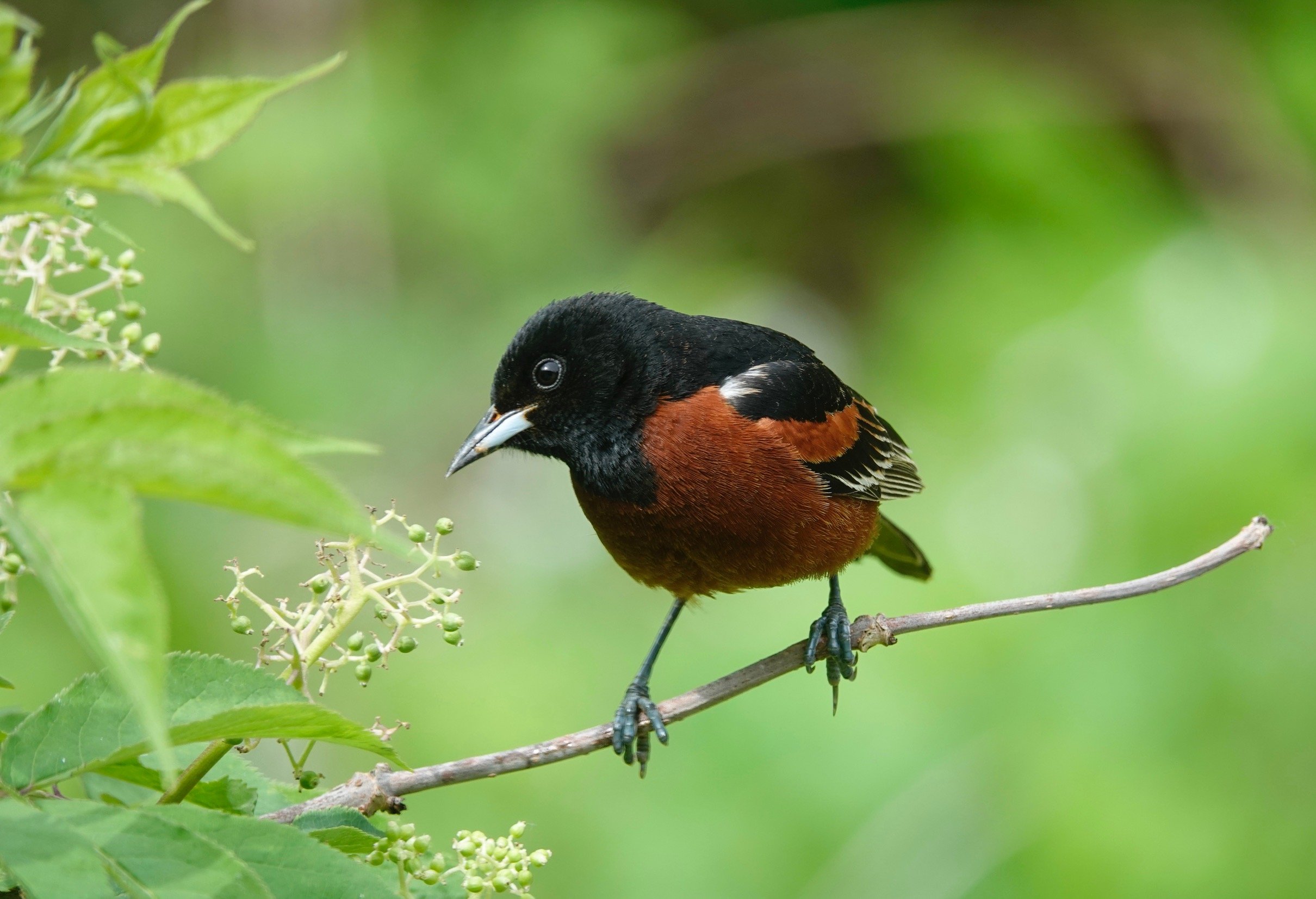Naturally
I saw so many deer, I expected to see one at the gas pumps. Karl Miller, Professor of Wildlife Ecology at the University of Georgia School of Forest Resources and a foremost authority on whitetail deer, says the U.S. deer population was estimated to be 25-30 million in Christopher Columbus' time. Hunting and habitat loss greatly reduced deer populations through the years. By 1900, their numbers had declined to 350,000. Since then, deer populations have surged to about 30-35 million as a result of the elimination of predators (like wolves), wildlife conservation efforts and controls on hunting.
I heard a barred owl call. “Who cooks for you? Who cooks for you all?” Harriet Tubman
is known for her work on the Underground Railroad and as a scout, spy, guerrilla soldier and nurse for the Union Army during the Civil War. She was also a naturalist who used the call of an owl to alert refugees and freedom seekers to come out of hiding and continue their journey of escape from slavery. The call used was believed to have been that of the barred owl, sometimes called a hoot-owl.
Would you like to see hummingbirds? Go to West Texas to see them without going to West Texas. You’ll find busy feeders here https://www.allaboutbirds.org/cams/west-texas-hummingbirds/?
Q&A
“Can birds see in total darkness?” Nocturnal birds such as owls have amazing night vision that allows them to hunt at night, but it’s believed that birds aren’t able to see in total darkness. Owls have forward-facing eyes, a feature they share with many predatory animals. Prey animals tend to have eyes on the sides of their heads, which gives them a wider field of view and a better chance of spotting predators. An owl’s enormous eyes help it take in enough light to see and make up as much as 5% of the bird’s total body weight. For comparison, our eyeballs are about 0.0003% of our total weight. Some owls can hunt by sound alone and can catch prey in a pitch-black environment.
“Would a plastic owl keep squirrels away from my deck?” No, squirrels have a good sense of smell. It may look like an owl, but it smells like a discarded Lego.
“What kind of duck is called a ‘butterball’?” It’s the bufflehead. The bufflehead name refers to the duck having a head like a buffalo, large and blocky. Other nicknames include little black-and-white duck, bumblebee duck, buffalo-headed duck, little dipper and spirit duck. The bufflehead is so cute, it could be the chickadee of ducks.
Neil Opstad of Albert Lea asked where the Baltimore orioles go. Some nest in your neighborhood, but they breed from Louisiana through central Canada. They leave as early as July for wintering grounds in Florida, the Caribbean, Central America and South America’s northern tip.
“Why do so many people hate wolves?” I think much of it is because of fairy tales like Little Red Riding Hood.
Roger Truax of Albert Lea wondered what the most common hawk is in Minnesota. Red-tailed hawks are here year-round, are the most commonly seen raptor in the Gopher State and are the most common hawks in North America. They’re the large highway hawks that find roads to be excellent hunting grounds.
“How does a baby cowbird know it’s a cowbird and not its host species?” This bird is an obligate brood parasite. It lays its eggs in the nests of other species. Scientists discovered fledgling cowbirds leave their foster parents’ care at night to sleep away from them in open fields, where they learn the ways and songs of fellow cowbirds. Research found a cowbird’s brain is hard-wired to recognize a sound that triggers the start of its journey to cowbird identity. The researchers call this a chatter password, which is the sound female cowbirds make when visiting the nest areas of their young ones. This special password guides species-specific recognition.
“Why do some birds hop and others walk?” In general, small birds that spend most of their time in trees, where they hop from branch-to-branch feeding, will also hop when on the ground. Birds that spend much of the time feeding on the ground or at ground level rather than in trees, tend to walk. There are exceptions and most birds are capable of doing both.
“Do pigeons mate for life?” Generally, they do. Parents take turns incubating eggs and feeding the squabs a crop secretion called pigeon milk.
Thanks for stopping by
“If love is in the air, it must surely be a bird.”—Jesus Antonio Moo Yam.
“We cannot protect something we do not love, we cannot love what we do not know, and we cannot know what we do not see. Or hear. Or sense.”—Richard Louv.
Do good.
©️Al Batt 2023
The orchard oriole is smaller than the Baltimore oriole and less often encountered in yards or parks. The orchard oriole’s bubbly song is a sweet, musical warble, more delicate and less repetitive than a robin’s. This photo of a male orchard oriole by Al Batt.

